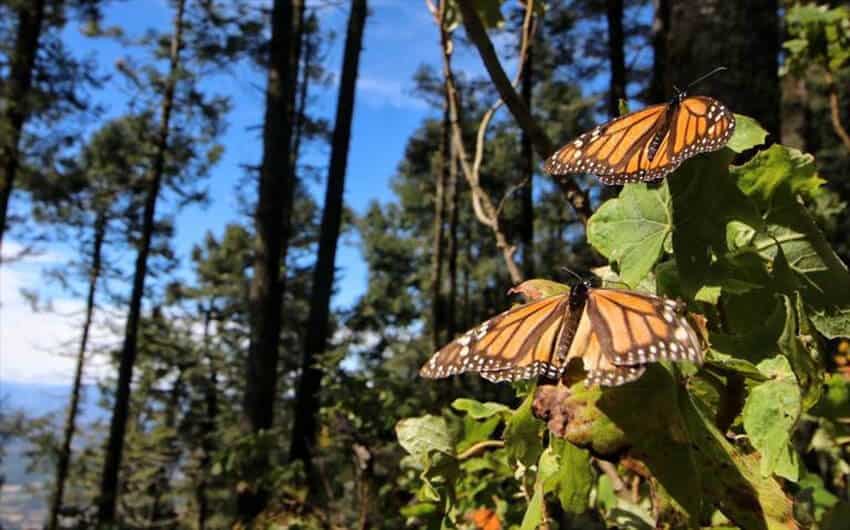The migratory monarch butterfly, which overwinters in fir forests in Michoacán and México state, has been classified as endangered by the International Union for Conservation of Nature (IUCN).
The Switzerland-based organization said in a press release Thursday that the butterfly – some of which overwinter in California – has been added to its Red List of Threatened Species as endangered.
It said that the monarch, which travels thousands of kilometers from the United States and Canada to spend winters in the comparatively mild climes of central Mexico, is threatened by habitat destruction and climate change.
IUCN said the population of the now-endangered migratory monarch butterfly – a subspecies of the monarch butterfly (Danaus plexippus) – has declined by between 22% and 72% over the past decade.

“Legal and illegal logging and deforestation to make space for agriculture and urban development has already destroyed substantial areas of the butterflies’ winter shelter in Mexico and California, while pesticides and herbicides used in intensive agriculture across the range kill butterflies and milkweed, the host plant that the larvae of the monarch butterfly feed on,” the organization said.
“Climate change has significantly impacted the migratory monarch butterfly and is a fast-growing threat; drought limits the growth of milkweed and increases the frequency of catastrophic wildfires, temperature extremes trigger earlier migrations before milkweed is available, while severe weather has killed millions of butterflies.”
UICN also said that western migratory monarch butterflies, which overwinter in California, are at greater risk of extinction than eastern ones, which migrate to Mexico. The population of the former declined by an estimated 99.9% between the 1980s and 2021, with numbers falling to just 1,914 from as many as 10 million.
The size of the larger eastern population shrank by 84% between 1996 and 2014, UICN said. “Concern remains as to whether enough butterflies survive to maintain the populations and prevent extinction.”
One positive is that the number of monarch butterflies overwintering in Mexico increased 35% last winter, according to the World Wildlife Fund and the National Commission of Natural Protected Areas. However, numbers were still well below those recorded in previous years.
Anna Walker, a member of IUCN’s butterfly and moth specialist group who led the monarch assessment, said that it’s “difficult to watch monarch butterflies and their extraordinary migration teeter on the edge of collapse.”
However, she added that “there are signs of hope” given that “so many people and organizations have come together to try and protect this butterfly and its habitats.”
“From planting native milkweed and reducing pesticide use to supporting the protection of overwintering sites and contributing to community science, we all have a role to play in making sure this iconic insect makes a full recovery,” Walker said.
Mexico News Daily
